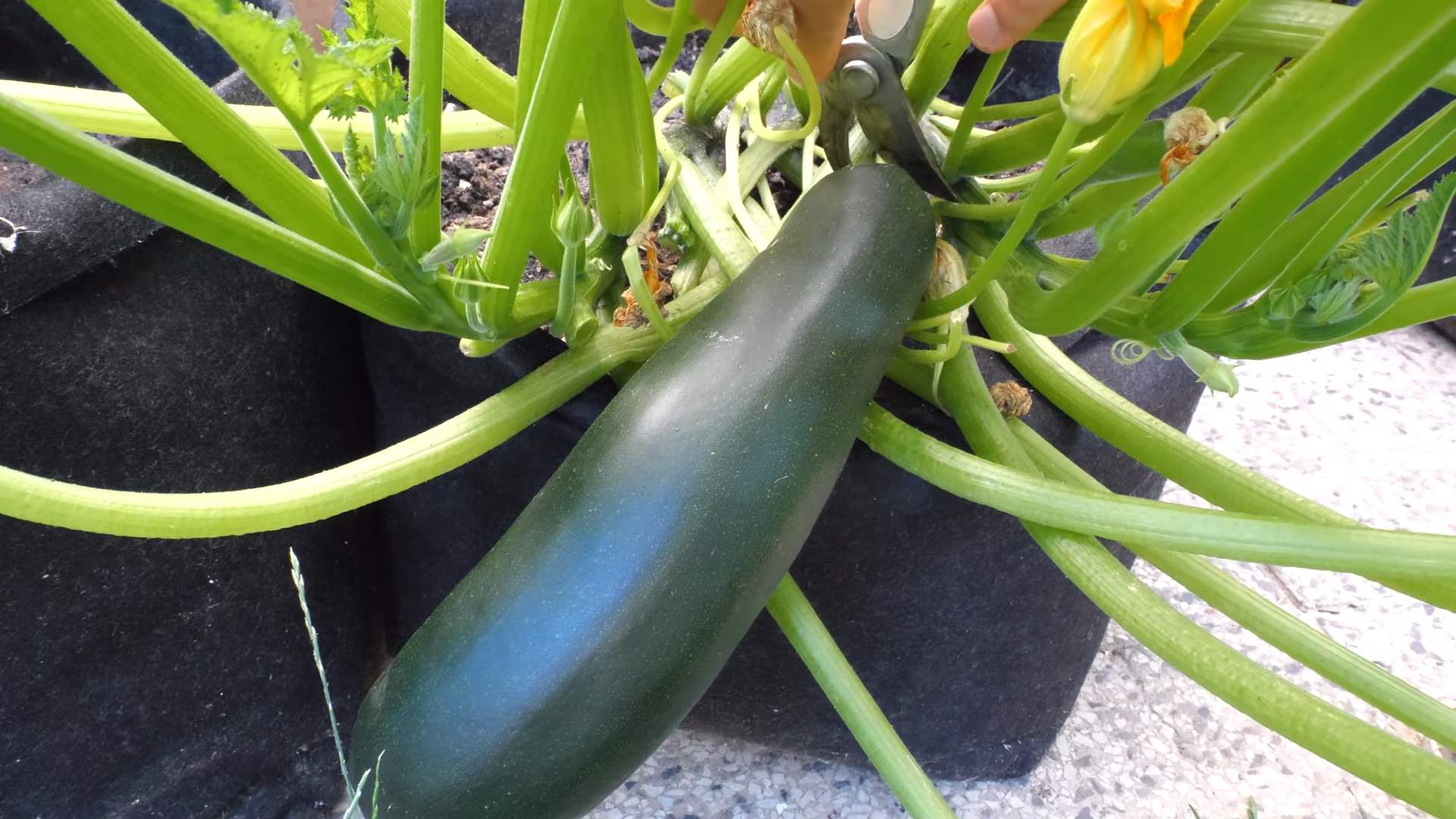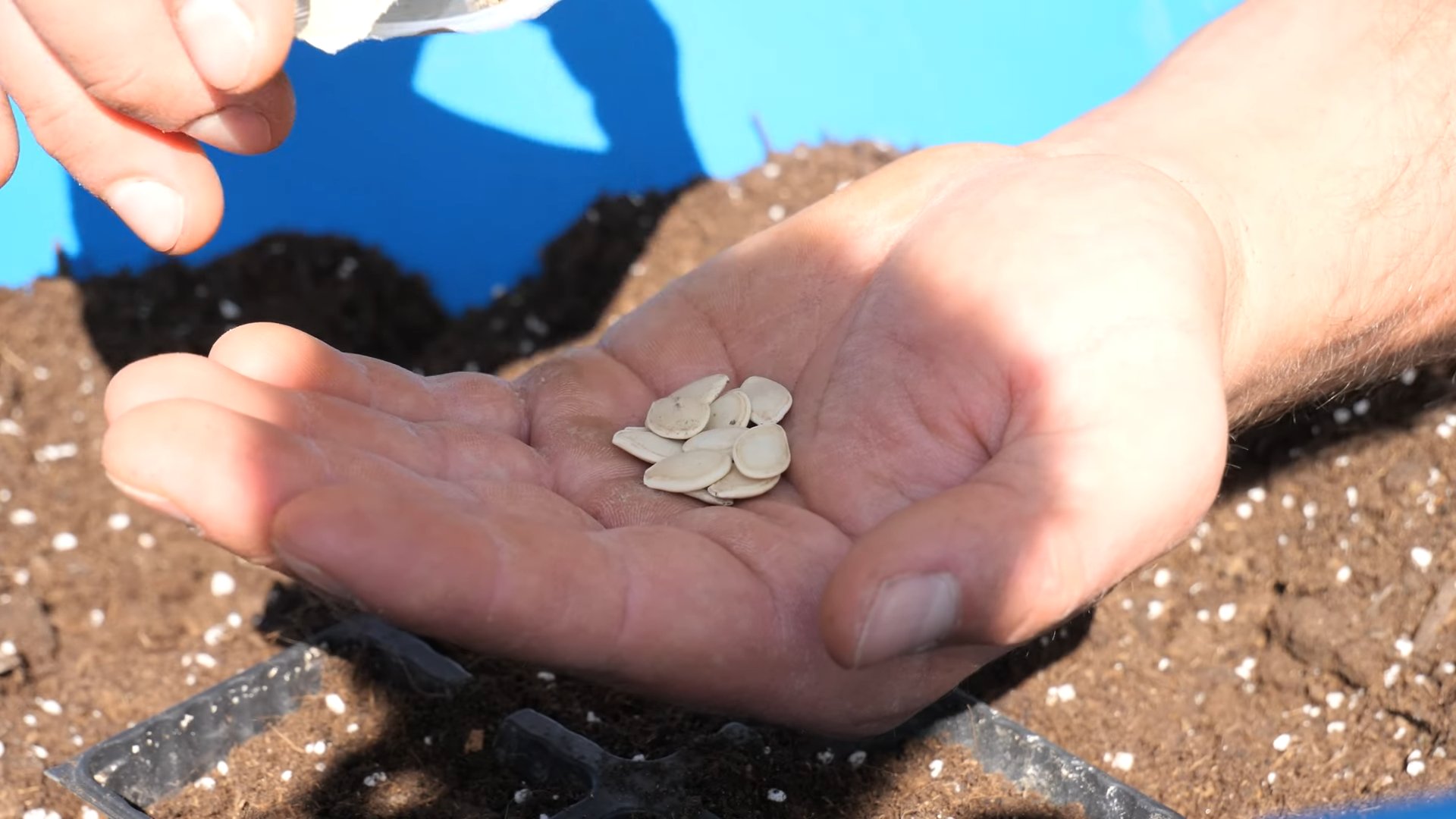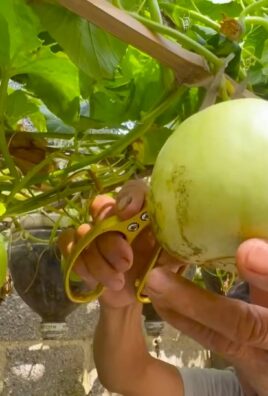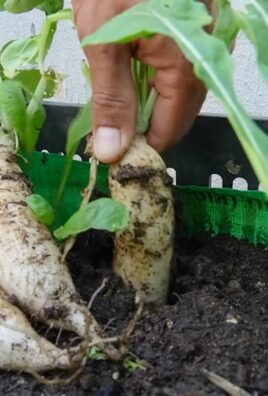Growing zucchini at home can feel like a superpower! Seriously, one minute you have a tiny sprout, and the next, you’re practically swimming in zucchini. But let’s be honest, sometimes that “superpower” feels more like a curse when you’re overwhelmed with more zucchini than you know what to do with. Have you ever wondered how our ancestors managed their gardens before the age of the internet? Zucchini, while a relatively modern squash variety, shares its lineage with ancient squashes cultivated for centuries by indigenous peoples in the Americas. They developed ingenious methods for maximizing yields and preserving their harvests, techniques we can still learn from today!
That’s why I’m so excited to share some of my favorite DIY tricks and hacks for growing zucchini at home. Whether you’re a seasoned gardener or just starting out, these tips will help you maximize your harvest, prevent common problems, and even find creative ways to use all that delicious zucchini. From simple soil amendments to clever pest control strategies, we’ll cover everything you need to know to become a zucchini-growing pro. So, grab your gardening gloves, and let’s dive in!

Growing Zucchini Like a Pro: My Foolproof Guide
Okay, zucchini lovers, let’s get down to business! I’m going to share everything I know about growing these prolific veggies right in your own backyard. Trust me, with a little know-how, you’ll be swimming in zucchini before you know it. Get ready for zucchini bread, zucchini noodles, grilled zucchini… the possibilities are endless!
Choosing Your Zucchini Variety
Before we even think about planting, let’s talk zucchini types. There are tons of varieties out there, each with its own quirks. Here are a few of my favorites:
* Black Beauty: This is a classic for a reason! It’s reliable, produces dark green, almost black zucchini, and is super versatile in the kitchen.
* Costata Romanesco: If you’re looking for something a little different, this Italian heirloom is the way to go. It has beautiful ridges and a nutty flavor.
* Golden Zucchini: Want to add some color to your plate? These bright yellow zucchini are just as tasty as their green counterparts.
* Round Zucchini (Eight Ball, One Ball): These are perfect for stuffing! They’re cute, compact, and easy to manage.
Think about what you want to do with your zucchini and choose a variety that suits your needs. I usually plant a couple of different kinds for variety!
Getting Started: Planting Your Zucchini
Zucchini are warm-weather plants, so timing is key. You don’t want to plant them too early, or they’ll just sit there and sulk.
* When to Plant: Wait until all danger of frost has passed and the soil has warmed up to at least 60°F (15°C). I usually aim for late spring or early summer.
* Starting Seeds Indoors (Optional): You can start zucchini seeds indoors about 3-4 weeks before the last expected frost. This gives them a head start, but it’s not essential. Use biodegradable pots to minimize root disturbance when transplanting.
* Direct Sowing: This is my preferred method. Simply sow the seeds directly into the garden soil.
Now, let’s get our hands dirty!
1. Prepare the Soil: Zucchini are heavy feeders, so they need rich, well-drained soil. Amend your soil with plenty of compost or well-rotted manure. I like to dig in about 2-3 inches of compost.
2. Choose a Sunny Spot: Zucchini need at least 6-8 hours of sunlight per day. Pick a spot in your garden that gets plenty of sunshine.
3. Sow the Seeds: Plant the seeds about 1 inch deep and 2-3 feet apart. Zucchini plants get big, so give them plenty of room to spread out. If you’re planting in rows, space the rows about 3-4 feet apart.
4. Water Well: After planting, water the seeds thoroughly. Keep the soil consistently moist until the seedlings emerge.
5. Thin Seedlings (If Necessary): If you planted multiple seeds in each spot, thin them out to the strongest seedling once they have a few true leaves.
Caring for Your Zucchini Plants
Once your zucchini plants are up and growing, it’s time to give them some TLC.
* Watering: Zucchini need consistent moisture, especially during hot, dry weather. Water deeply at the base of the plants, avoiding getting the leaves wet. I usually water in the morning to give the leaves time to dry before nightfall.
* Fertilizing: Feed your zucchini plants every 2-3 weeks with a balanced fertilizer. You can use a liquid fertilizer or a slow-release granular fertilizer. Follow the instructions on the package.
* Mulching: Mulch around your zucchini plants with straw, wood chips, or shredded leaves. This will help to retain moisture, suppress weeds, and keep the soil cool.
* Weeding: Keep the area around your zucchini plants free of weeds. Weeds compete with the plants for nutrients and water.
* Pest Control: Keep an eye out for pests like squash bugs, squash vine borers, and aphids. I’ll talk more about pest control in the next section.
* Pollination: Zucchini plants have separate male and female flowers. The female flowers need to be pollinated in order to produce fruit. If you’re not seeing any zucchini forming, you may need to hand-pollinate the flowers.
Dealing with Pests and Diseases
Unfortunately, zucchini plants are susceptible to a few pests and diseases. But don’t worry, with a little vigilance, you can keep them under control.
* Squash Bugs: These pesky bugs suck the sap from the leaves, causing them to wilt and die. Handpick them off the plants or use insecticidal soap.
* Squash Vine Borers: These are the bane of every zucchini grower’s existence! The larvae bore into the stems of the plants, causing them to collapse. Look for small holes in the stems and sawdust-like frass. You can try to remove the borers by slitting the stem open and pulling them out, but prevention is key. Wrap the base of the stems with aluminum foil or netting to prevent the moths from laying their eggs.
* Aphids: These tiny insects suck the sap from the leaves, causing them to curl and distort. Spray them off with a strong stream of water or use insecticidal soap.
* Powdery Mildew: This fungal disease causes a white, powdery coating on the leaves. Improve air circulation by spacing the plants properly and water at the base of the plants. You can also spray with a fungicide if necessary.
* Blossom End Rot: This is caused by a calcium deficiency and results in a dark, sunken spot on the blossom end of the zucchini. Make sure your soil is rich in calcium and water consistently.
I always try to use organic methods of pest and disease control whenever possible. Neem oil, insecticidal soap, and diatomaceous earth are all great options.
Harvesting Your Zucchini
Now for the fun part! Harvesting your zucchini.
* When to Harvest: Zucchini are best harvested when they are young and tender, usually about 6-8 inches long. If you let them get too big, they’ll become seedy and tough.
* How to Harvest: Use a sharp knife or pruners to cut the zucchini from the plant. Be careful not to damage the plant.
* Regular Harvesting: The more you harvest, the more zucchini your plants will produce. Check your plants every day or two during peak season.
Pro Tip: Don’t be afraid to harvest the male flowers too! They’re delicious battered and fried.
What to Do with All That Zucchini!
Okay, you’ve got a mountain of zucchini. Now what? Here are a few of my favorite ways to use it:
* Zucchini Bread: A classic for a reason!
* Zucchini Noodles (Zoodles): A healthy and delicious alternative to pasta.
* Grilled Zucchini: Simple and flavorful.
* Zucchini Fritters: A tasty appetizer or side dish.
* Stuffed Zucchini: Fill them with rice, meat, or vegetables.
* Zucchini Soup: Creamy and comforting.
* Zucchini Relish: A great way to preserve your harvest.
* Freeze It: Shredded zucchini freezes well and can be used in baking later.
Seriously, the possibilities are endless! Get creative and experiment with different recipes.
Troubleshooting Common Zucchini Problems
Even with the best care, you might run into a few problems along the way. Here are some common issues and how to fix them:
* No Zucchini Forming: This could be due to a lack of pollination. Try hand-pollinating the flowers.
* Yellowing Leaves: This could be a sign of nutrient deficiency or overwatering. Check your soil and adjust your watering schedule accordingly.
* Wilting Leaves: This could be caused by squash vine borers or underwatering. Check the stems for signs of borers and water deeply.
* Small, Misshapen Zucchini: This could be due to poor pollination or nutrient deficiency. Make sure your plants are getting enough sunlight, water, and fertilizer.
Extending Your Zucchini Season
Want to keep the zucchini coming for as long as possible? Here are a few tips:
* Succession Planting: Plant new zucchini seeds every 2-3 weeks to ensure a continuous harvest.
* Cold Frames or Row Covers: Use cold frames or row covers to protect your plants from frost in the fall.
* Choose Early-Maturing Varieties: Opt for varieties that mature quickly to get a head start on the season.
Saving Zucchini Seeds
If you want to save seeds from your zucchini plants for next year, here’s how:
1. Choose a

Conclusion
So, there you have it! Mastering the art of growing zucchini at home is not only achievable but also incredibly rewarding. From selecting the right variety to warding off pests and diseases, we’ve covered the essential steps to ensure a bountiful harvest. But why should you embark on this green thumb adventure?
First and foremost, the taste of homegrown zucchini is simply unparalleled. Forget the bland, watery specimens you find at the grocery store. Freshly picked zucchini bursts with flavor, offering a subtle sweetness and a satisfying texture that elevates any dish. Imagine grilling slices of your own zucchini, adding them to a vibrant summer salad, or baking a moist and delicious zucchini bread – all made with produce you nurtured from seed to table.
Beyond the superior taste, growing your own zucchini is a sustainable and cost-effective way to enjoy this versatile vegetable. You’ll reduce your carbon footprint by eliminating transportation and packaging, and you’ll save money by avoiding the inflated prices of store-bought produce. Plus, gardening is a fantastic way to connect with nature, relieve stress, and get some much-needed exercise.
But the benefits don’t stop there. Growing zucchini at home allows you to control the growing environment, ensuring that your plants are free from harmful pesticides and chemicals. You can choose organic methods and rest assured that you’re feeding your family healthy, wholesome food.
Ready to take your zucchini game to the next level? Consider experimenting with different varieties. Try growing golden zucchini for a splash of color, or opt for round zucchini for a unique presentation. You can also explore companion planting to deter pests and improve pollination. Marigolds, nasturtiums, and basil are all excellent choices for planting alongside your zucchini.
Don’t be afraid to get creative in the kitchen, too. Zucchini can be used in countless recipes, from savory to sweet. Grate it into fritters, spiralize it into noodles, or stuff it with rice and vegetables for a hearty meal. The possibilities are endless!
We encourage you to embrace the joy of growing zucchini at home. It’s a simple yet profound way to connect with nature, nourish your body, and create delicious meals. So, grab your seeds, prepare your soil, and get ready to experience the satisfaction of harvesting your own homegrown zucchini.
And most importantly, we want to hear about your experiences! Share your tips, tricks, and triumphs in the comments below. Let’s build a community of zucchini enthusiasts and inspire others to embark on this rewarding journey. Happy gardening!
Frequently Asked Questions (FAQ)
What is the best time to start growing zucchini?
The ideal time to start growing zucchini depends on your climate. In general, zucchini thrives in warm weather and is sensitive to frost. If you live in a region with a long growing season, you can direct sow zucchini seeds outdoors after the last frost, typically in late spring or early summer. If you live in a colder climate, you can start seeds indoors 3-4 weeks before the last expected frost and transplant them outdoors once the weather warms up. Make sure the soil temperature is consistently above 60°F (15°C) for optimal germination and growth.
How much space does a zucchini plant need?
Zucchini plants are known for their vigorous growth and can quickly become quite large. Therefore, it’s crucial to provide them with ample space to thrive. As a general rule, allow at least 2-3 feet between plants and 3-4 feet between rows. This spacing will ensure that each plant has enough room to spread out, receive adequate sunlight, and access nutrients from the soil. If you’re growing zucchini in containers, choose a large pot that is at least 18 inches in diameter and depth.
How often should I water my zucchini plants?
Zucchini plants require consistent moisture, especially during hot and dry weather. Water deeply and regularly, aiming to keep the soil consistently moist but not waterlogged. A good rule of thumb is to water 1-2 inches per week, depending on the weather conditions. Check the soil moisture regularly by sticking your finger into the soil. If the top inch feels dry, it’s time to water. Avoid overhead watering, as this can increase the risk of fungal diseases. Instead, water at the base of the plant, using a soaker hose or drip irrigation system.
What are some common pests and diseases that affect zucchini plants?
Zucchini plants are susceptible to several pests and diseases, including squash bugs, squash vine borers, powdery mildew, and blossom end rot. Squash bugs are sap-sucking insects that can weaken and kill zucchini plants. Squash vine borers are moth larvae that tunnel into the stems of zucchini plants, causing them to wilt and die. Powdery mildew is a fungal disease that causes a white, powdery coating on the leaves of zucchini plants. Blossom end rot is a physiological disorder caused by calcium deficiency, resulting in dark, sunken spots on the blossom end of the zucchini fruit.
To prevent and control these pests and diseases, practice good garden hygiene, such as removing plant debris and weeds. Inspect your plants regularly for signs of infestation or disease. Use organic pest control methods, such as insecticidal soap or neem oil, to control squash bugs and squash vine borers. Improve air circulation around your plants to prevent powdery mildew. Ensure that your plants receive adequate calcium by amending the soil with lime or bone meal.
Why are my zucchini flowers falling off without producing fruit?
This is a common problem known as blossom drop, and it’s often caused by inadequate pollination. Zucchini plants have separate male and female flowers. The female flowers have a small zucchini fruit at the base, while the male flowers have a long stem. Pollination occurs when pollen from the male flower is transferred to the female flower.
Several factors can contribute to poor pollination, including lack of pollinators, high temperatures, and excessive nitrogen fertilization. To improve pollination, you can hand-pollinate your zucchini flowers. Use a small paintbrush to collect pollen from the male flower and transfer it to the stigma of the female flower. You can also attract pollinators to your garden by planting flowers that provide nectar and pollen, such as sunflowers, zinnias, and lavender. Avoid using pesticides that can harm pollinators.
How do I know when to harvest zucchini?
Zucchini is best harvested when it is young and tender, typically when it is 6-8 inches long. Overripe zucchini can become tough and seedy. To harvest zucchini, use a sharp knife or pruning shears to cut the stem close to the plant. Handle the zucchini carefully to avoid bruising. Regular harvesting will encourage the plant to produce more fruit.
Can I eat zucchini blossoms?
Yes, zucchini blossoms are edible and delicious! They can be stuffed, fried, or added to salads. Harvest the blossoms in the morning, when they are open and fresh. Remove the pistil (female part) or stamen (male part) from the center of the blossom before cooking.
How can I store zucchini?
Zucchini can be stored in the refrigerator for up to a week. Wrap it loosely in plastic wrap or store it in a perforated plastic bag. You can also freeze zucchini for longer storage. Shred or slice the zucchini and blanch it in boiling water for 1-2 minutes. Cool it quickly in ice water and drain well. Pack the zucchini in freezer bags or containers and freeze for up to 8 months.





Leave a Comment